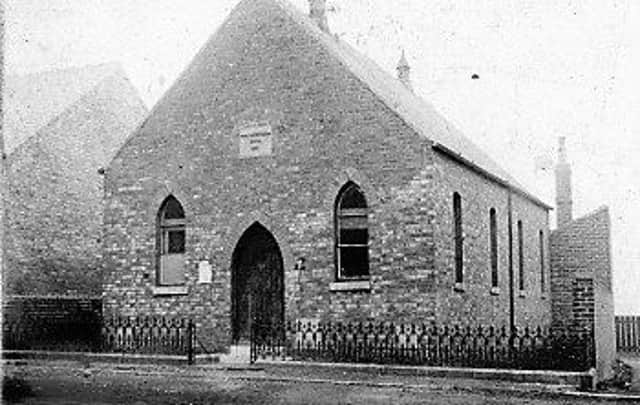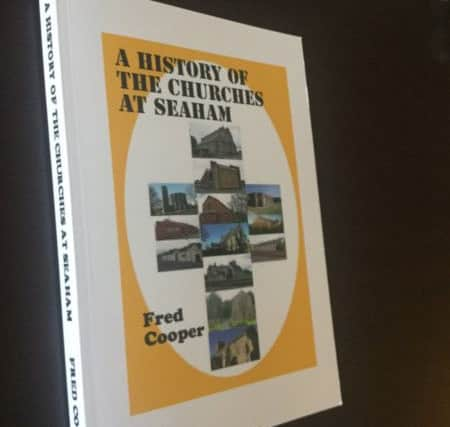An expert look at the history of Seaham's churches


Ever since, his passion over Seaham’s past has soared and now he’s an established author.
We are indebted to him for telling us all about his latest book.


Here’s a first look at the history of Seaham’s churches.
Advertisement
Hide AdAdvertisement
Hide AdA year’s worth of extensive research has gone into Fred Cooper’s latest work.
He describes his history of Seaham as “thought provoking and interesting” and it chronicles the background to the 24 churches and chapels built in the town.
Fred may no longer be a Seaham resident - he lives in New Herrington these days - but he told Wearside Echoes: “I regularly visit my home town two or three times each week to carry out research.”


After enjoying a career in the world of financial management, Fred retired from his job as Finance Director at the University of Sunderland in 2003.
Advertisement
Hide AdAdvertisement
Hide Ad“Retirement offered me the opportunity to spend my time researching and writing local history,” he said.
“As I get older I find more and more incredible and interesting stories about the history of Seaham.”
His latest book is the seventh from his pen. It is titled A History of the Churches at Seaham and begins in Saxon and Norman times when the area we know as Seaham was served by the two churches of St Mary’s and St Andrews in the twoparishes of (Old) Seaham and Dalton-Le-Dale.


“Seaham was then a farming community and the population was scattered sparsely around the district and varied little over the centuries,” said Fred.
Advertisement
Hide AdAdvertisement
Hide AdBut a huge population increase came about after the opening of a harbour at Dalden Ness in 1831.
Along with that, there came the building of railways from Rainton and then South Hetton to carry coals to the new harbour.
As the town flourished over the next century - particularly with the sinking of Seaton, Seaham, Dawdon and Vane Tempest collieries - the demand for housing pushed the periphery of the town outwards into the countryside. Older housing stock built in the mid-19th century was replaced by new housing estates, and from the 1930’s onwards by the Slum Clearance Programme.


Eventually, each new community sought facilities such as shops, post offices, banks, transport and of course, for many who looked for spiritual comfort and guidance they needed churches.
Advertisement
Hide AdAdvertisement
Hide AdNew parishes were created and 24 places of worship were built in the town of Seaham and, with the exception of St Mary’s and St Andrews, they were all built in the 19th and 20th century.
Fred added: “In medieval times, churches were often built by the manorial lord who were the patrons of the church and were the possessors of the advowson i.e. the right to appoint the Rector.”
“At Seaham, my research shows that the advowsons of some of the churches were held by the Londonderry family.”
The combination of the Londonderry family as possessor of the advowson and the major landowner in the area as well as their wealthy and aristocratic contacts and affiliations was a powerful force.
Advertisement
Hide AdAdvertisement
Hide AdThe Londonderry family were able to exercise power and influence on almost all industrial and commercial ventures and decisions in the town and this influence even extended to church matters.
Grants and leases of land were made for churches by the Londonderry family, as well as donations of money and materials to building funds.
There were annual contributions to the stipends of the clergy and the presentation of gifts, fonts, altars, and other adornments in churches.
Fred said: “In many churches in England it was not unusual for major landowners to be patrons of the church.”
Advertisement
Hide AdAdvertisement
Hide Ad“A History of the Churches at Seaham” is available as an eBook and in paperback from Amazon, iBook’s and eBay and as a paperback from East Durham Heritage &Lifeboat Centre at Seaham Marina, Seaham Family History Group and Creams of Seaham.
The price of the paperback book is £6.50 from Seaham Family History Group.
Alternatively the paperback is on sale on Amazon books for £5.80 +2.80p&p (£2.49 for the eBook) and on eBay at 4.99 + £2.14p&p.